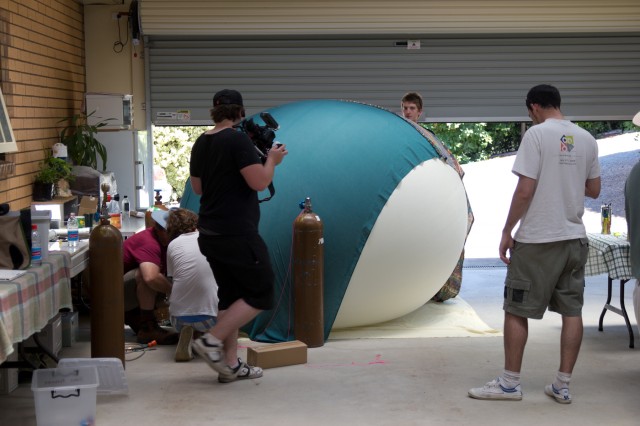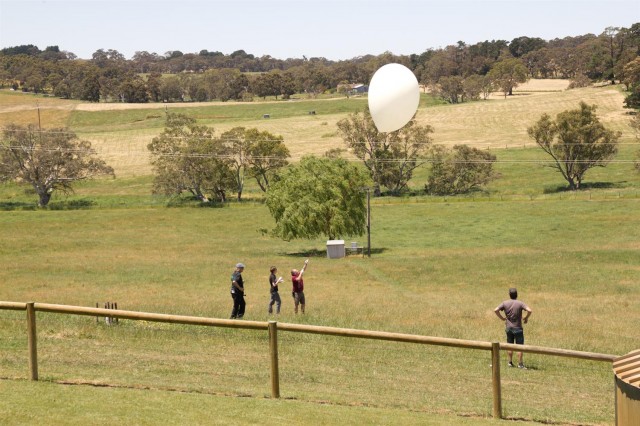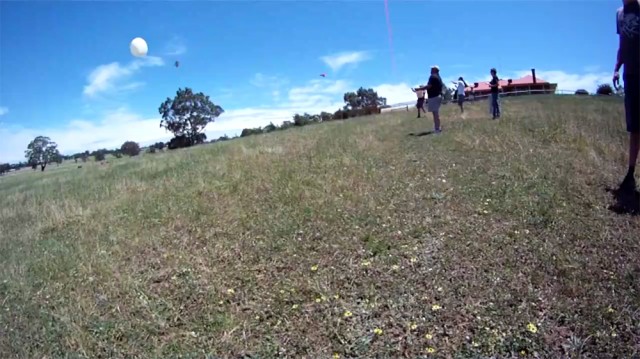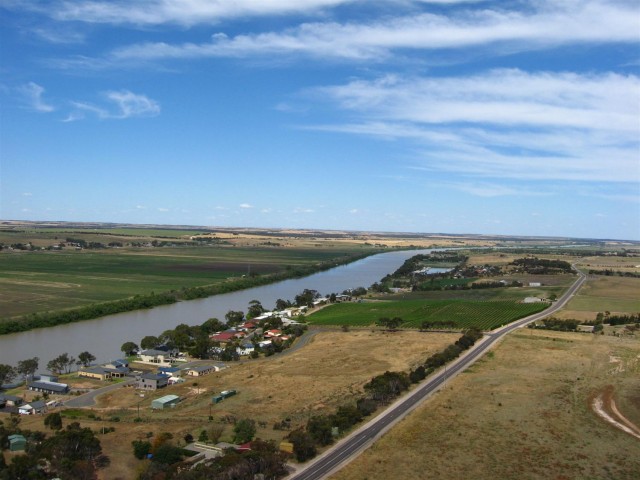Horus 12
Technical information:
| Launch date | 22/11/2010, 1:00 pm |
| Landing date | 22/11/2010, 3:30 pm |
| Flight duration | ~ 2.5 hours |
| Launch site | -35.1021, 138.825 |
| Landing site | -35.1918, 139.3165 |
| Flight path | Web, KMZ |
| Distance travelled |
45 km |
| Maximum altitude | 33,773 m |
| Average ascent rate | 5.6 m/s |
| Impact speed | 6 m/s |
| Stills camera | Canon a560 |
| Video camera | GoPro HD Hero |
| Flight computer | Nut 1.1 flight computer |
| GPS module | Falcom FSA03 |
| Radio transmitter | Radiometrix NTX2 25mw |
| Telemetry | 300 baud RTTY, CRC16 checksum |
| Backup telemetry | 500mW APRS beacon, 30 second posit interval |
| Tracking | Ground stations (distributed listener), 3 chase cars, web based tracker |
Details:
Horus 12 was the first of 2 launches funded by Tony Wheeler of Lonely Planet, and brainchild of Melbourne artist Chris Lansell. The original concept for Horus 12 had been a very high altitude launch carrying a single stills camera - after some last minute design changes, we ended up flying both a stills camera & HD video camera.
Launch:
Launch of Horus 12 was tricky - we were working with a larger balloon size than previously, and weather conditions were somewhat blustery on the ground. Fortunately, our landing site was predicted to be relatively close by - near Murray Bridge.
After some great work by our balloon filling expert Alan, the balloon was filled, tied off, and ready to move outdoors into the wind. This was no mean feat, as the balloon was by this stage quite large and very prone to being blown about by the wind. Fortunately thanks to some good team work, we got the balloon out into the field and managed to let it up a few meters.
The next challenge facing us was getting the balloon train airborne - with the wind speed and large balloon, this proved difficult. Our balloon line is quite strong, though does have a tendency to cut or cause rope burn on windy days! Some more team work got the balloon train mostly airborne, with the final payload being the main event: the video and stills camera system.
Flight:
With the balloon and payloads airborne, we turned our attention to the flight path and predicted landing site. The larger balloon had resulted in a slightly higher ascent rate than expected - this would mean a shorter flight time, and (unfortunately) a lower burst altitude. However, asides from the slight over inflation, everything seemed to be working well - the balloon was closely matching the predicted flight path, both tracking systems were working & our ground stations had no problems receiving the telemetry.
Tony & Chris had driven down from Melbourne to be there for the launch, the two of them as well cinematographer Matt & our team member Mark made up our third chase car for the day. Tony's team & Adrian's team set off together, while my team left slightly afterwards. Soon enough we were near the predicted landing site, and found a spot to stop and wait in the shade (not that it really helped on a ~35 plus degree day).
1 hour and 40 minutes after launch, the balloon burst at 33.7km altitude. Our expected ceiling had been higher than this, but the increased weight & higher ascent rate resulted in an earlier burst. Fortunately, with the CUSF predictor now incorporated into our chase software, we quickly got an idea of where the payload would land, despite the early burst.
Landing:
As the chase teams headed towards the landing site, it became clear that it was going to be hard to call which side of the payloads would land on - that is, if they didn't end up landing in the river. Adrian & Tony's teams headed for the south bank of the river, and I headed for the spot directly across from them on the northern bank of the river.
The payload spent more time than we were all comfortable with meandering around the river, before touching down ~200m south of the river bank in a field. Both Adrian & Tony's teams were able to witness the payload descending under parachute and landing in the field - an excellent outcome!
Media:
We were fortunate enough to have plenty of people present at the launch or Horus 12, and the cameras were rolling. Both Grant VK5GR (Project Horus' de-facto videographer) and Chris put together some videos of the day (thanks guys! ![]() ) - there's a promise of more to come too!
) - there's a promise of more to come too!




